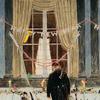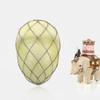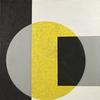Japanese Mandalas on View at Metropolitan Museum through November 29
- NEW YORK, New York
- /
- June 30, 2009
Exhibition dates: June 18 – November 29, 2009
Location: The Sackler Wing Galleries for the Arts of Japan, 2nd Floor
An impressive group of Japanese mandalas—graphic depictions of the Buddhist
universe and its myriad realms and deities—are featured in an exhibition on view at
The Metropolitan Museum of Art through November 29. Showcasing more than
60 magnificent works—painting, sculpture, drawing, metalwork, stoneware, textile,
and lacquer—drawn from major museums and collections in the United States,
Japanese Mandalas: Emanations and Avatars illustrates the exceptional and
complex world of Esoteric Buddhist art in Japan. Highlights of the exhibition
include a set of monumental 13th-century mandalas on loan from the Brooklyn
Museum—this pair was selected by the Japanese government to be conserved in
Japan. Displayed in tandem with iconographic drawings that explain the character
and placement of the deities, the mandalas introduce viewers to the supreme
Buddha Dainichi Nyorai, the principal buddha of Japanese Esoteric Buddhism, and
his innumerable emanations and avatars across the Buddhist cosmos.
The exhibition is made possible by The Miriam and Ira D. Wallach Foundation.
“The Brooklyn mandalas are of a type known as the ‘Mandalas of Both Worlds’ or
‘Ryōkai mandala’ and constitute the finest examples of this kind in the United
States,”said Sinéad Kehoe, Assistant Curator in the Metropolitan Museum’s
Department of Asian Art. “Although Indian in origin, the concept of the mandala
arrived in Japan from China in the early ninth century. The Chinese prototypes for
the first Japanese mandalas have long since vanished, and their form is carefully
preserved in Japan alone. At the same time, Japanese mandalas evolved in entirely
new directions unique to Esoteric Buddhism as it has been practiced in Japan, often
incorporating Shintō elements along the way.”
Esoteric Buddhism, called MikkyōI in Japanese, has been the impetus for
spectacular artistic developments in Japan since the year 806, when a Japanese
monk by the name of Kūkai (774-835) returned from a voyage to China with the
now-lost Chinese prototype of the paired cosmic diagrams known as the
“Mandalas of Both Worlds.” After that point, Japanese religious art and culture
exploded in myriad new directions. The original mandalas were copied and used as
a powerful tool to spread the teachings of the Shingon (“True Word”), a school of
Esoteric Buddhism founded by Kūkai, as well as the Esoteric teachings of the
Tendai School founded by Kūkai’s fellow monk Saichō (767-822).
The exhibition is organized around three pairs of “Mandalas of Both Worlds” –
one from the Muromachi period (1392-1573), consisting entirely of deities
represented by Sanskrit letters; a pristine pair by Matsubara Shōgetsu from the Edo
period (1615–1868) that once belonged to the powerful Tokugawa Shogunate; and
the superb pair dating from the Kamakura period (1185-1333), on loan from
Brooklyn Museum. The exhibition also includes an important early Esoteric
Buddhist sculpture Tobatsu Bishamonten, a deity isolated from the “Mandalas of
Both Worlds” for individual worship, as well as a scroll from the 14th-century
illustrated narrative handscroll A Long Tale for an Autumn Night, which tells of
the ill-fated love affair between a senior monk and a beautiful novice.
The Museum will offer an array of educational programs in conjunction with the
exhibition, including “Under the Gaze of the Stars: Astral Manuals in Medieval
Japan,” a lecture by Bernard Faure, Kao Professor in Japanese Religion, Columbia
University (November 7), and “Collectors and Collections,” a panel discussion with
collectors Sylvan Barnet and William Burto, moderated by Sinéad Kehoe
(November 14).
The lenders to the exhibition are: Sylvan Barnet and William Burto Collection; the
Brooklyn Museum; Mary and Jackson Burke Foundation; Mary Griggs Burke;
Alvin Friedman-Kien and Ryo Toyonaga Collection; the Princeton University Art
Museum; and John C. Weber Collection.
* **
During the course of the Japanese Mandalas exhibition, two other installations take
place concurrently in The Sackler Wing Galleries for the Arts of Japan.
The first installation, Astonishing Silhouettes: Western Fashion in 19th-Century
Japanese Prints, explores the illustration of Western dress by Japanese ukiyo-e print
artists in the latter half of the 19th century, when Japan encountered Western
fashion. The installation focuses on Yokohama prints from the early 1860s showing
colorful Japanese renditions of Westerners in Western dress. The installation also
displays Meiji prints of the 1880s depicting members of the Japanese elite in Western
clothing, which they adopted along with other elements of Western culture. A
number of 19th-century French fashion illustrations and an American dress from the
1880s are shown for comparison.
Brilliantly executed Yokohama prints by ukiyo-e artists such as Gountei Sadahide
(active ca. 1807-1873), Utagawa Yoshitora (active ca. 1850-1880), and Utagawa
Yoshikazu (active ca. 1850-1870) are on view. A striking American dress with an
emphatic bustle extending from an elongated waist is displayed to embody the
fashion silhouette of the 1880s. Works in the installation are drawn from the
collections of the Museum’s Asian Art Department, Costume Institute, and
Department of Drawings and Prints. The exhibition puts on view for the first time
the Museum’s holdings in Yokohama prints from the collection of William S.
Lieberman (1923–2005), former chairman of the Museum’s Department of Modern
Art.
* * *
The second installation is a selection of masterworks by Shibata Zeshin (1807-1891)
and his contemporaries. A virtuoso in lacquer painting, Zeshin was one of the few
Japanese artists of the late 19th century who was recognized in the West. A
counterpoint to such Meiji print artists as Toyohara Chikanobu (1838 - 1912),
whose most famous work focused on elites in Western dress (an example that is
included in the Astonishing Silhouettes installation), Zeshin’s work captures the
spirit of the pastimes of the commoners of the city of Edo as it was becoming the
modern-day capital of Tokyo under the new Meiji regime. The installation includes
Autumn Grasses in Moonlight (ca. 1872-91), one of Zeshin’s finest screen paintings,
and a writing box with design of a gourd with butterflies (1886), a masterpiece
demonstrating the artist’s technical prowess.
* * *
Japanese Mandalas: Emanations and Avatars is organized by Sinéad Kehoe with the
assistance of Joyce Denney, Assistant Curator, and Masako Watanabe, Senior
Research Associate, both of the Museum’s Asian Art Department.
Astonishing Silhouettes: Western Fashion in 19th-Century Japanese Prints is
organized by Joyce Denney and Masako Watanabe, with the assistance of Sinéad
Kehoe; Jan Reeder, Consulting Curator in The Costume Institute; and Cora
Michael, Assistant Curator in the Department of Drawings and Prints.
Shibata Zeshin is organized by Mami Hatayama, Jane and Morgan Whitney Fellow,
Department of Asian Art.
Japanese Mandalas: Emanations and Avatars is featured on the Museum’s website
(www.metmuseum.org).
# # #
June 24, 2009
VISITOR INFORMATION
Hours
Fridays and Saturdays 9:30 a.m.–9:00 p.m.
Sundays, Tuesdays–Thursdays 9:30 a.m. –5:30 p.m.
Met Holiday Mondays in the Main Building:
September 7, October 12, December 28, 2009;
January 18, February 15, May 31, 2010 9:30 a.m. –5:30 p.m.
Met Holiday Mondays sponsored by CIT
All other Mondays closed; Jan. 1, Thanksgiving, and Dec. 25 closed
Recommended Admission (Includes Main Building and The Cloisters Museum and Gardens
on the Same Day)
Adults $20.00, seniors (65 and over) $15.00, students $10.00
Members and children under 12 accompanied by adult free
Advance tickets available at www.TicketWeb.com or 1–800–965–4827
For More Information (212) 535-7710; www.metmuseum.org
No extra charge for any exhibition.
1000 Fifth Avenue
New York, New York
About Metropolitan Museum of Art
The Metropolitan Museum of Art is one of the world's largest and finest art museums. Its collections include more than two million works of art spanning 5,000 years of world culture, from prehistory to the present and from every part of the globe. Founded in 1870, the Metropolitan Museum is located in New York City's Central Park along Fifth Avenue (from 80th to 84th Streets). Last year it was visited by 5.2 million people.




10270x400_c.jpg)




__Portrait_of_a_Young_100x100_c.jpg)










